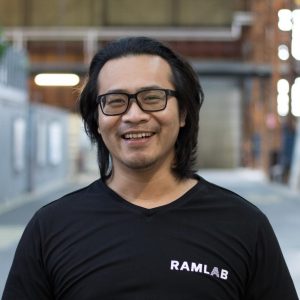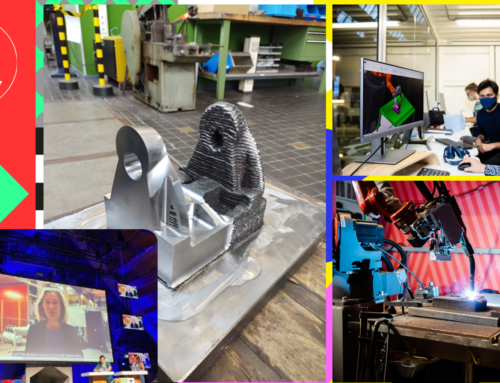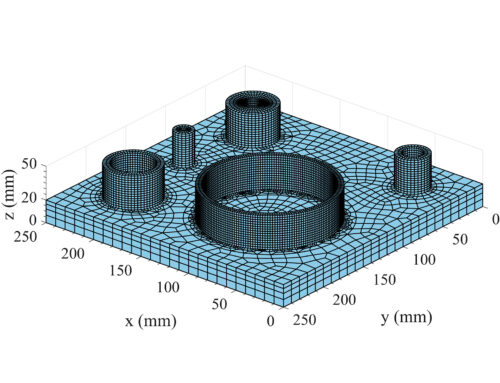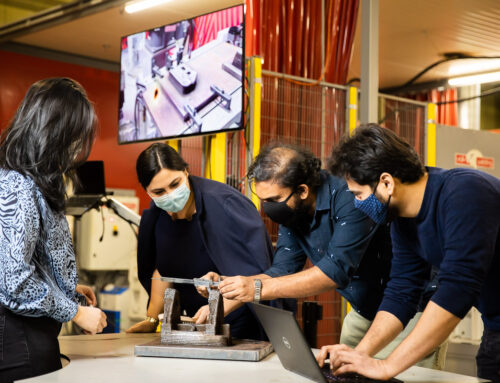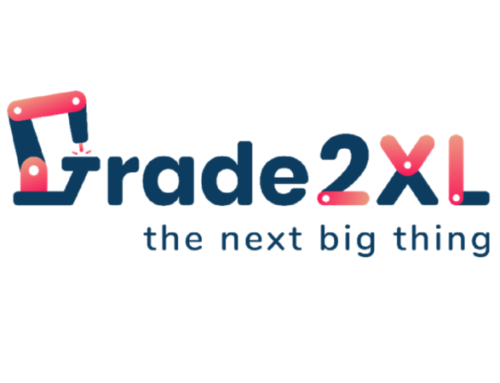Project Description
Key information
Project in the Spotlight: S17024e/P16-46
Market: Additive Manufacturing
Written by: Viktoria Savran
Introduction
Large engineering structures like turbines, metallic bridges or industrial machinery are generally still manufactured by traditional processes such as forging, casting, welding, bolting or by machining them from solid blocks. These processes do not allow for the local control of material properties to achieve a specific function like anti-corrosion, optimized strength or desired hardness. Additive manufacturing (AM) has opened up a totally new realm of material design possibilities. Wire Arc Additive Manufacturing (WAAM) can potentially produce fully dense metallic structures with virtually no porosity, but there are still challenges to be solved. M2i together with TU Delft and RAMLAB initiated an ambitious, fundamental research programme designed to overcome the barriers limiting the full exploitation of wire and high energy source based additive manufacturing processes.
Project goal and outcomes
In AiM2XL focus is laid on the additive manufacturing of large-scale (∼ 1 to > 10 m) metallic components. To ensure the structural integrity of the parts, a rigorous understanding of the material processing techniques, the resulting (spatially graded) microstructural characteristics, residual stresses and mechanical properties are required. Multiple process-related factors control material responses, including metallurgical composition and the thermal-mechanical history of each material point. Various empirical studies have been performed on the influences of process parameters on microstructure and thereby on the resulting mechanical properties. A few studies have attempted to quantitatively capture these effects in computational models.
Tim van Nuland, in his research project S17024e, which is part of AiM2XL programme, worked on the understanding and prediction of the relationship between a 316L stainless steel microstructure produced using WAAM and the macroscopic mechanical properties of the build construct. The goal of his project was to obtain a novel structure-property relationship for products made with large-scale deposition techniques based on computational modelling. To achieve this, Tim developed a detailed microstructure model that can take into account process-related characteristics and defects, e.g., voids, interfaces between layers, residual stresses and grain orientation (see Figure below), which is capable of predicting the resulting macroscopic mechanical properties. The latter was included by making use of state-of-the-art crystal plasticity models.
Figure: Computational model framework
The effective mechanical properties of the printed microstructure were investigated by a scale transition step using computational homogenization. As a result of the spatially correlated grain orientations inside the fusion zone, distinct deformation patterns and strain localizations were predicted. The strain fields obtained from numerical simulations were compared to the experimental deformation patterns and a remarkable correspondence was thereby obtained. Numerical simulations were also performed in various uniaxial loading directions to predict the 3D yield behaviour. A strongly anisotropic plastic response was obtained and an adequate match between the numerical model and experimental micro-tensile tests was found in various loading directions.
The most important aspect influencing the macroscopic yield anisotropy is the process-induced texture. Therefore, the developed model may be simplified using a mean-field homogenization approach (e.g., the Taylor model) to obtain a fast initial estimate of the macroscopic plastic anisotropy, which is particularly interesting for industrial applications where fit-for-purpose material design needs to be implemented. Due to the chosen framework setup, the developed model is very versatile and generally applicable to other techniques and materials.
The project S17024e got NWO-TTW funding (P16-46) in 2017-2021 as part of AiM2XL programme (AiM2XL – Additive Manufacturing for Extra Large Metal Components – M2i – Materials innovation institute). Tim van Nuland has worked in the group of prof. Marc Geers, co-supervised by Dr. Hans van Dommelen, and in close collaboration with Luca Palmeira Belotti, who supported him with experimental input and validation. AiM2XL programme is coordinated by prof. Fred van Keulen (TU Delft). Industrial company RAMLAB, next to financial support, supported the project with testing and validation at industrial environment.
Tim van Nuland (TU Eindhoven)
Metal additive manufacturing has the potential to control local mechanical properties of a 3D printed product by varying the microstructure through the temperature history at each material point. I think this ultimate goal is one of my main motivations and I am glad to have been able to make a step in this direction. I really enjoyed the collaboration with RAMLAB, who helped greatly in supplying samples and understanding the typical microstructural features that should be taken into consideration in the model. All in all, I’m very curious to see what metal 3D printing will bring in the future.
The interesting results of Tim’s project will be implemented in our follow up projects. It will help us to obtain a better WAAM deposition strategy through a better understanding of the prediction of the deformation behaviour in the build parts. It can help us to speed up our R&D process to obtain an optimal printing procedure. We thank Tim for his hard and excellent work. We would like to express our sincere gratitude to M2i and TTW-NWO for all kinds of help provided to us in this endeavour.


